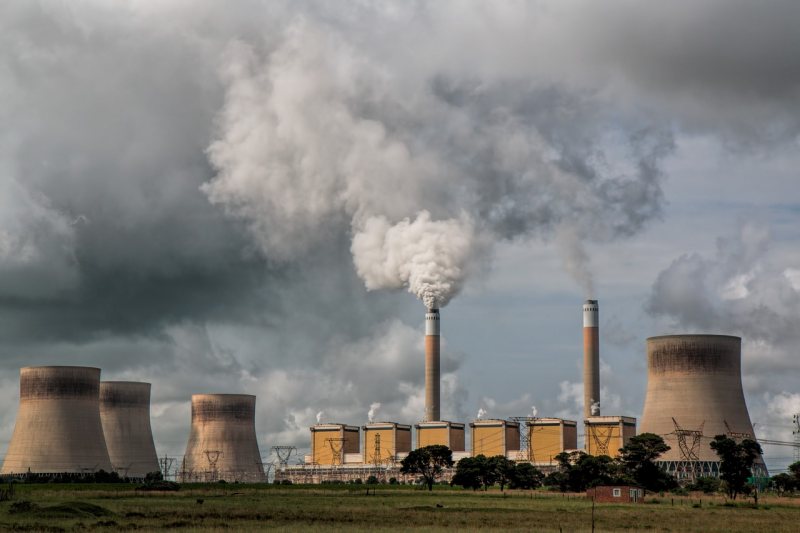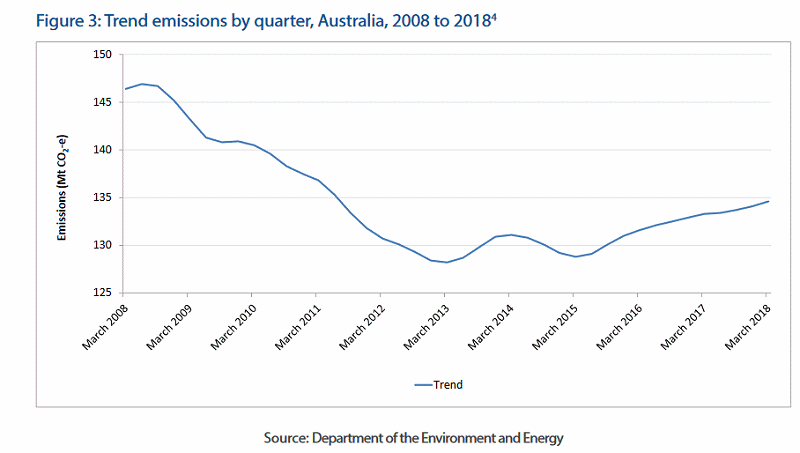
Image: stevepb
While renewable energy is helping to rein in Australia’s carbon emissions, they are continuing to rise according to a government report.
The Quarterly Update of Australia’s National Greenhouse Gas Inventory: March 2018 was released on Friday afternoon.
Australia’s overall emissions for the year to March 2018 were 1.9 per cent below emissions in 2000 (547.0 Mt CO2-e) and 11.2 per cent below emissions in 2005 (604.7 Mt CO2-e). However, emissions for the year to March jumped 1.3 per cent or 6.8 Mt CO2-e on the same period in 2017. The report states this was mainly driven by LNG production for export, with volumes increasing 25.4 per cent.
While emissions were up overall, emissions per capita were reportedly at their lowest levels in 28 years.
The nation’s emissions target is 26-28 per cent below 2005 levels by 2030.
Electricity Sector Emissions Continue To Decrease (Overall)
Electricity generation represents the biggest source of emissions in Australia, accounting for 34 per cent in the year to March 2018.
A bright spot in the report was electricity sector emissions declined 13.9 per cent (29.2 Mt CO2-e) this year to March from a peak in March 2009. Comparing this year to last (to June), National Electricity Market (NEM) emissions were down 4.4 per cent on 2017. However, they increased 0.8 per cent on a seasonally adjusted and weather normalised basis for the June quarter.
The report notes coal generation’s share has decreased from 85 per cent of total electricity generation in the NEM since 2009 to 75 per cent, while gas has increased from 9 per cent to 11 per cent and renewables from 7 percent to 14 per cent.
The report can be downloaded here.
Report Late – Again
Prior to the report’s release, the Climate Council called out the Federal Government on its delay.
“This has become a worryingly familiar scenario. The Federal Government not only delays releasing climate information, it also tries to bury it,” stated Climate Council’s acting CEO Dr Martin Rice last Monday. “We’ve seen emissions data quietly released on Christmas Eve, or on a Friday evening, at a time it’s least likely to attract attention or scrutiny”.
While the Climate Council is yet to release an official statement on the latest report, no doubt the timing of this release hasn’t gone unnoticed – a Friday afternoon before a long weekend in some states, during school holidays and just before football grand finals weekend.
Garnaut Climate Change Review Anniversary
On a related note, it was 10 years ago yesterday that the final report of the Garnaut Climate Change Review was delivered.
Released on 30 September 2008, the Final Report recommended the nation should seek an international agreement maintaining carbon dioxide equivalent concentrations at 450 parts per million (ppm) or lower. The Review recommended an Emissions Trading Scheme should be the main carbon-reduction tool for Australia, supported by public funding in low emissions technologies from coffers filled by permit auction revenues.
Papers produced as part of the Garnaut Climate Change Review are still available here.
Trivia – just a ballpark figure: a 6kW solar system can avoid around 8.7 tonnes of carbon dioxide emissions a year compared to conventional coal fired power generation. Even if advanced ultra-supercritical HELE (so-called High Efficiency Low Emissions) coal-based electricity generation is used, 6kW solar still works out to avoiding around 5.9 to 6.5 tonnes of carbon emissions a year.


 RSS - Posts
RSS - Posts



Speak Your Mind